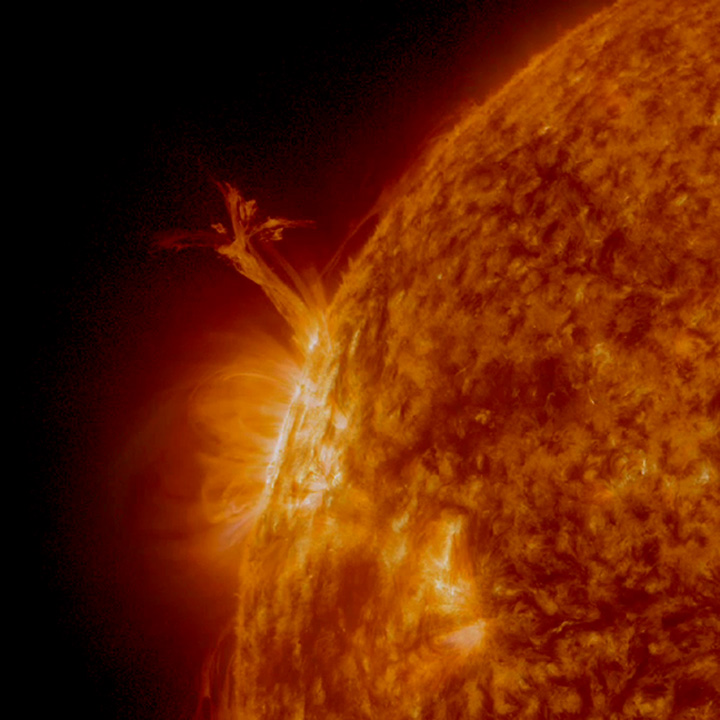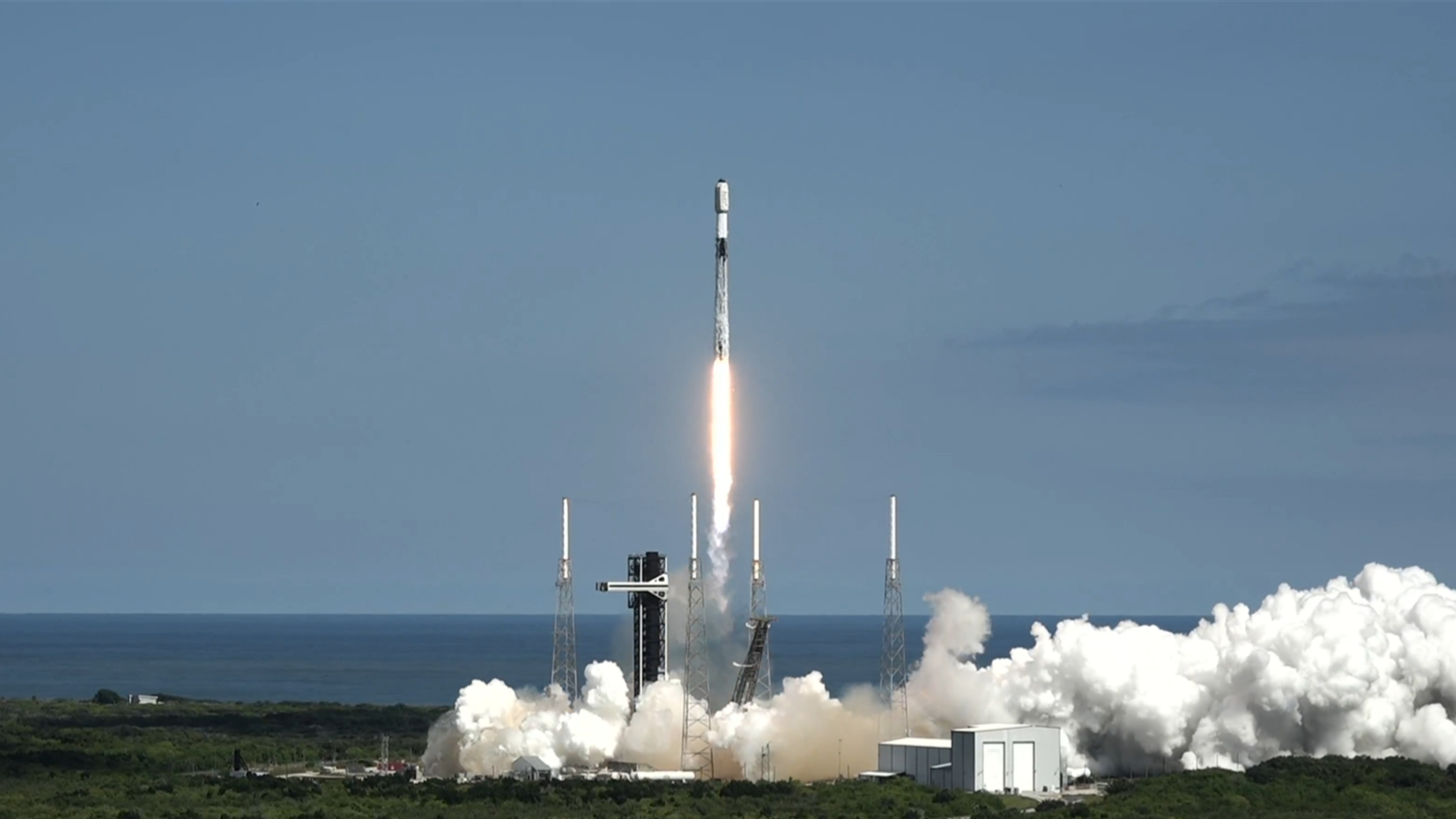Massive Sun 'Twister' Swirls Up 12 Earths High

A NASA satellite has caught a stunning, yet eerie, video of a huge plasma twister rising up from the surface of the sun.
The video, taken by the Solar Dynamics Observatory, shows a plasma eruption that swirls up like a tornado to a dizzying height of up to 93,206 miles (150,000 kilometers) above the solar surface.
"Its height is roughly between 10 to 12 Earths," solar astrophysicist C. Alex Young of NASA's Goddard Space Flight Center in Greenbelt, Md., told SPACE.com. [See the stunning sun twister video]
The solar twister occurred on July 12 when an eruption of magnetic plasma, called a prominence, spiraled up from the sun in a graceful whirlwind, then split into four separate strands that twisted into a knot before fading away. The entire event lasted just a few hours.
Young said the ethereal twister look of the prominence was largely a matter of perspective. The Solar Dynamic Observatory was seeing the eruption from an angle that caught the prominence's rise up from the solar surface.
From another vantage point, the observatory may have seen the entire prominence arc up from the sun's surface, curve over and then close again in a vast loop. [Infographic: Anatomy of a Sun Storm]
"It would probably look much more normal, like a loop … kind of fill up like a loop and then fall back down," Young said. "It's not uncommon that we see this kind of helical-twisting structure."
Breaking space news, the latest updates on rocket launches, skywatching events and more!
Prominences occur when material erupts along magnetic field lines that briefly extend out beyond the solar surface as the sun rotates on its axis.
"It's kind of like having rubber bands and you're twisting them, and they sort of bunch up and get knotted," Young said. "The same thing is happening in the sun's magnetic field."
You can follow SPACE.com Managing Editor Tariq Malik on Twitter @tariqjmalik. Follow SPACE.com for the latest in space science and exploration news on Twitter @Spacedotcomand on Facebook.
Join our Space Forums to keep talking space on the latest missions, night sky and more! And if you have a news tip, correction or comment, let us know at: community@space.com.

Tariq is the award-winning Editor-in-Chief of Space.com and joined the team in 2001. He covers human spaceflight, as well as skywatching and entertainment. He became Space.com's Editor-in-Chief in 2019. Before joining Space.com, Tariq was a staff reporter for The Los Angeles Times covering education and city beats in La Habra, Fullerton and Huntington Beach. He's a recipient of the 2022 Harry Kolcum Award for excellence in space reporting and the 2025 Space Pioneer Award from the National Space Society. He is an Eagle Scout and Space Camp alum with journalism degrees from the USC and NYU. You can find Tariq at Space.com and as the co-host to the This Week In Space podcast on the TWiT network. To see his latest project, you can follow Tariq on Twitter @tariqjmalik.
